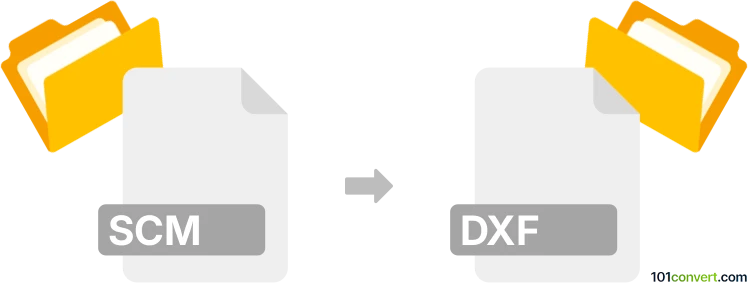Convert SCM to DXF
How to convert SCM embroidery files to DXF for CAD and laser cutting using the best software tools.

How to convert scm to dxf file
- Other formats
- No ratings yet.
101convert.com assistant bot
1h
Understanding scm and dxf file formats
SCM files are typically associated with embroidery design software, such as Brother's PE-Design or Janome's embroidery machines. These files contain stitch patterns, color information, and instructions for embroidery machines. On the other hand, DXF (Drawing Exchange Format) is a widely used CAD file format developed by Autodesk for representing 2D and 3D drawings. DXF files are compatible with many CAD and vector graphic applications, making them ideal for design, manufacturing, and laser cutting workflows.
Why convert scm to dxf?
Converting SCM embroidery files to DXF format is useful when you want to use embroidery designs in CAD software, for purposes such as laser cutting, engraving, or further vector editing. This conversion allows for greater flexibility and integration with various design and manufacturing processes.
How to convert scm to dxf
Direct conversion from SCM to DXF is not commonly supported by most software. The typical workflow involves first converting the SCM file to a more widely supported embroidery format (like PES or DST), and then exporting or converting that file to DXF.
Recommended software for scm to dxf conversion
- Ink/Stitch (Inkscape extension):
- Open your embroidery file (after converting SCM to PES or DST) in Inkscape with the Ink/Stitch extension installed.
- Use Extensions → Ink/Stitch → Import Embroidery to load the design.
- Edit as needed, then export using File → Save As → Desktop Cutting Plotter (AutoCAD DXF) (*.dxf).
- Wilcom Truesizer:
- Open the converted embroidery file (PES or DST).
- Use File → Export → DXF to save the design as a DXF file.
- Online converters:
- Some online tools can convert embroidery files to vector formats, but may require intermediate conversion to PES or DST first.
Tips for successful conversion
- Always back up your original SCM file before conversion.
- Check the stitch-to-vector translation, as some embroidery details may not convert perfectly to DXF.
- Use embroidery software to clean up or simplify the design before exporting to DXF.
Conclusion
While there is no direct one-step solution for SCM to DXF conversion, using embroidery software like Ink/Stitch or Wilcom Truesizer with an intermediate format (such as PES or DST) provides a reliable workflow. This enables you to repurpose embroidery designs for CAD, laser cutting, and other vector-based applications.
Note: This scm to dxf conversion record is incomplete, must be verified, and may contain inaccuracies. Please vote below whether you found this information helpful or not.